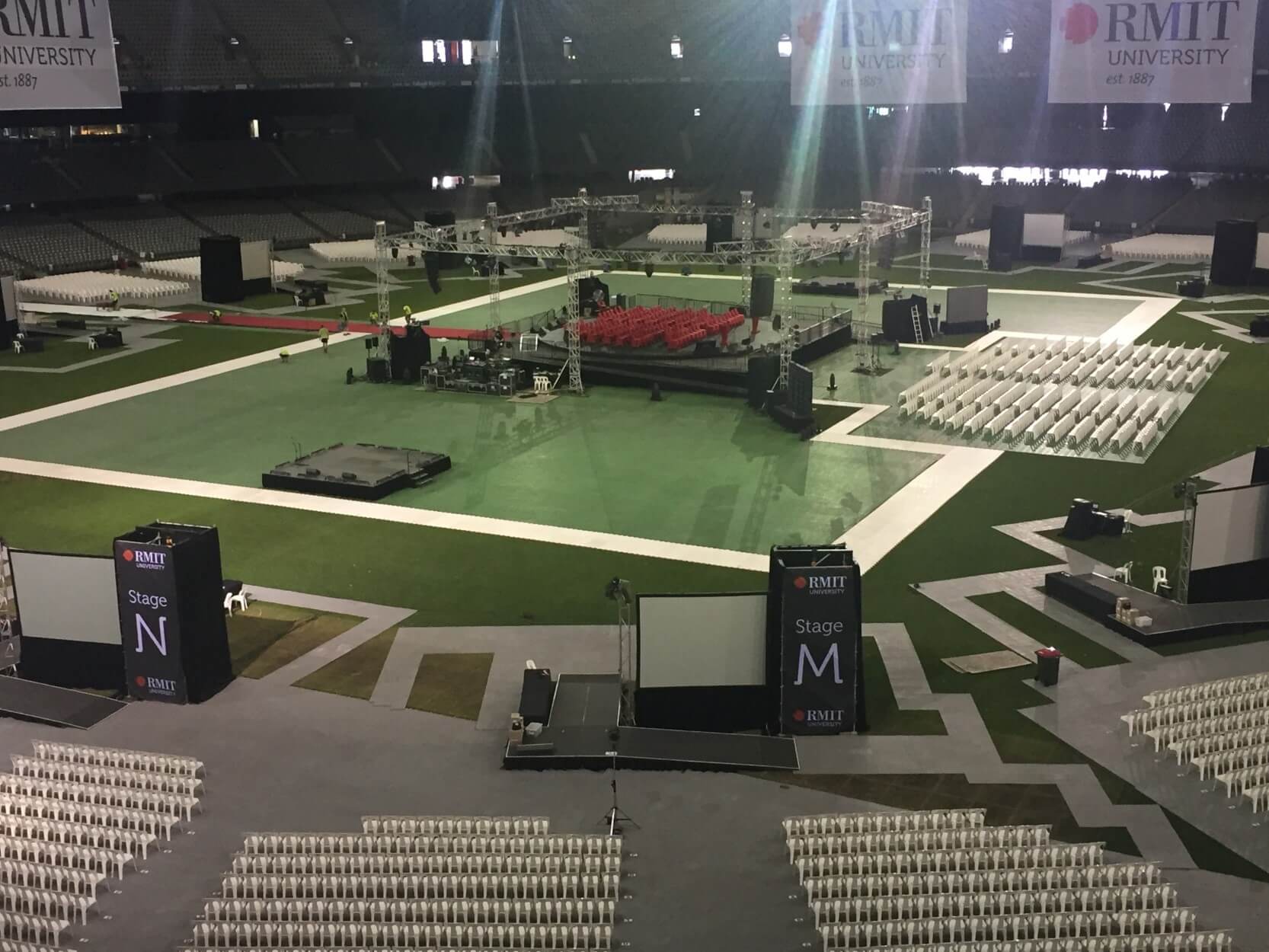
Flooring is a permanent or temporary covering of a floor. A building construction floor can mean a leveled surface that supports the occupants of objects.
There are diverse flooring types, and they depend on different factors. The kinds of flooring materials utilized in designing any building construction depend on aesthetics, applications, and your choice.
In other words, you can choose a construction flooring material based on your requirement, and applications that offer the most satisfying results.
Kinds of Flooring Applications and Materials

Here are the different kinds of flooring materials commonly utilized when constructing:
- Glass Flooring
Glass is a good material you can use for your construction flooring. It’s used for unique conditions, including transmitting light from upstairs to downstairs.
Glass flooring is available in tiles that are fixed in near-space frames. Though glasses are expensive, they offer an exciting and pretty appearance.
- Cement Concrete
Cement concrete is a common flooring material in buildings. It’s cheaper, durable, and fitted for any kind of construction.
You can mix cement concrete of 1:3:6 to 1:5:10 or even lime concrete 40% 1:2 lime sand mortar plus 60% coarse aggregate as a base course.
When you’re done hardening, lay at the top the 1:2:4 cement concrete mix with a 40 mm thick layer.
- Rubber Flooring
You can use Rubber sheets or tiles for your flooring aims. They’re designed with pure rubber that’s mixed with asbestos and cotton fibers.
Most people use suitable adhesives to fix the rubber tiles alongside wooden or concrete bases.
Like Cork, Rubber flooring can be noiseless and suitable in offices and libraries.
- Bricks Flooring
There’s brick material for building. It can be utilized for flooring aims but is not suitable for public or residential buildings.
You can use brick flooring in godowns and unimportant rooms. In this aspect, a well-burnt brick is favorable and it should be uniform with one size color.
- Flagstones Flooring
This is another building material. Flagstone is a kind of sedimentary rock obtained by dividing into bed planes.
It has calcite, silica, and iron oxide. You can use Flagstone to create tiles of diverse sizes and shapes.
Watch this video
to see how most temporary floorings are constructed.

- Ceramic Flooring
Ceramic, an inorganic material, can be useful in construction.
Ceramic flooring and tiles are popular floors covering components. Ceramic has properties like brittleness, compressive resistance, and hardness.
- Plastic Flooring
Plastic tiles, materials, or PVC (Poly Vinyl Chloride) tiles are mostly laid on top of a concrete base.
They’re widely used nowadays. And are readily available in diverse sizes, shapes, and colors.
Meanwhile, Plastic tiles are slippery, and you can get them easily.
- Mud and Muram Flooring
Mud is moist earth used as a flooring material since ancient times. It has nice thermal insulation.
Some chopped straws are included in the mud to prevent it from cracking. Often, cow dung is utilized in this mixture.
Further, Murram is a natural product obtained from rock’s disintegration. It can be useful in construction flooring.
Muram and mud have related properties. They’re both good as flooring materials.
- Timber or Wood Flooring
Timber or wood is a common flooring material. This flooring mostly happens when timber is affordably available like in hilly areas.
Timber boards or blocks can be used as flooring covers.
Wooden floors are well-fitted for auditoriums or dance floors.
- Cork Flooring
Cork, gotten from a cork oak tree, can be used as flooring material as carpets.
Since the carpets are noiseless, you can use them in theaters or libraries.
There’s Cork made from advanced graded cork bars with molding compression.
- Linoleum Flooring
You can use Linoleum material for your construction flooring. It’s a product obtained by oxidizing some linseed oil in resins, gum, pigments, and cork dust.
Linoleum is mostly available in sheets and it’s used to cover wooden or concrete flooring. These sheets might be printed or plain.
- Asphalt Flooring
Asphalt can be a flooring material in various ways. It’s a well-viscous liquid petroleum.
If sand and asphalt are mixed in 1:2 proportion, it’d be termed asphalt mastic. This is poured on the concrete base as a flooring cover. If sand is replaced by marble chips then it is called an asphalt mosaic.
Asphalt tiles are equally available. They’re prepared with asphalt fibers, mineral pigments, and inert materials.
Factors Affecting Flooring Material Selection
The following can affect your choice of flooring material:
- The durability of the flooring material
- The initial prices
- The material hardness and smoothness
- The cleanliness and appearance
- Sound and thermal insulation
- Fire resistance and Damp-proof, and
- Level of maintenance
Construction Flooring Service or Company
Building any construction can be a lot easier with a good flooring construction company or service.
In other words, it’s a good investment and even affordable when you contact a construction flooring company or expert.
You can browse or ask in your city to find a reliable and experienced professional to handle your construction project.
In particular, no Fuss Event Hire is an experienced and reliable construction flooring company for your needs in Australia.
The firm provides efficient services and flooring solutions in temporary access grass protection systems, grandstand seating systems, marquee hire, portable flooring, and corporate/event furnishings.
No Fuss Event Hire is very notable for their involvement in Australia’s iconic events.
These include providing flooring, portable marquees, and event furnishings to the 2006 Commonwealth Games, Thoroughbred Racing Industry, Australian Formula 1 and Motorcycle Grand Prix, AFL Grand Final, Sound Relief plus many more.
Contact No Fuss Event Hire today to experience easy, quick, and effective construction flooring.




